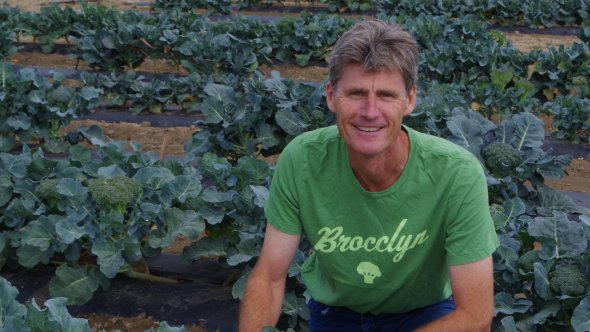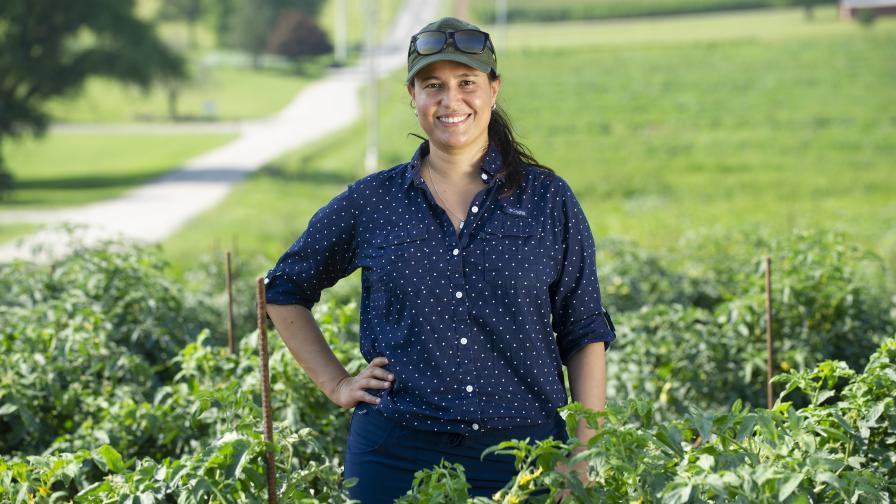The Eastern Broccoli Project Moves Forward

Thomas Björkman, the director of the Eastern Broccoli Project, discusses details on the challenges of broccoli production in the East.
With the drought casting uncertainty on the production of broccoli in the West, growers in the East have seized the opportunity to increase their production of the crop while learning to adapt to the demands of the burgeoning marketplace.
Established in 2010, Cornell University’s Eastern Broccoli Project has been leading the expansion of broccoli production in the East. Created as a long-term program, for the last five years, the project has been funded by a $3.2 million grant from USDA and an additional $1.7 million from various commercial partners, with a recent proposal submitted to secure funds for the coming five years.
American Vegetable Grower® connected with Thomas Björkman, the project’s director, to get an update on project’s status and details on the challenges of Eastern broccoli production.
Markets For Mid-Size Growers
One of the major goals of the project is to better understand market opportunities and to find and remove barriers to market development, Björkman says.
“We want to see where increased production is likely to show up. Where are people looking for more product, and why is it not ending up there? Those are the two areas that we’ve been busy with,” he says.
Describing the current market environment, Björkman says that while most large wholesale growers have found success in their distribution channels, it’s the mid-sized growers who are in search of markets to serve their needs.
“There’s this whole big middle part, and we’re finding that we have a lot of medium-sized vegetable farms with hundreds of acres who grow a diversity of vegetables. These growers can’t justify buying the appropriate cooling equipment. Let’s say they’re just growing 50 acres of broccoli — that’s not a trivial amount — but it’s not quite enough to justify the infrastructure,” Björkman explains.
To help remediate this problem, Björkman says that food hubs — which allow smaller and mid-sized growers to band together and pool resources — have been growing in popularity.
Food hubs are an excellent way for smaller to mid-sized growers to gain entry into local markets they otherwise may not have been able to due to a lack of resources, he says.
“They may not have a full-time marketing person because they’re not big enough for that. They may not have a GAP-certified packinghouse with the appropriate cooling equipment, refrigerated storage, or loading dock that’s convenient to a freeway. Those are things you really need to be efficient enough and competitive in the market,” Björkman says.
The Emphasis On Locally Grown
Increasing interest in sourcing locally grown produce is one of the reasons food hubs have been so popular, he explains. More and more Eastern buyers have been interested in purchasing local broccoli, but have had trouble finding growers to meet their demand.
“We have a bunch of growers who can grow broccoli just fine. It’s not that hard to grow, it’s just that they need reliable varieties, and somebody to buy it under the terms they can produce it. It’s a matter of aligning the [buyer/seller]
requirements,” he explains. The reason for the push behind locally grown broccoli is not dissimilar to the reasons behind the push for other locally grown crops: supporting the local economy, improved shelf life, sustainability, and lower transportation costs, Björkman says.
“Walmart and other large-scale businesses are really interested in measuring their own sustainability, and producing locally can help those numbers,” he says.
“Shelf life is also important. Those extra days the broccoli is not on the road is time it can be in the warehouse or on the grocery store shelf. We’ve been working with Taylor Farms, which is the biggest packer of fresh-cut salad and broccoli in the country. They pack at five locations in the East, so getting a little extra shelf life in those bags of broccoli florets after it leaves their plant — that’s valuable to them.”
The drought in California also has played a role in the need for increased production in the East. “People are realizing the risks of concentrated production. Even though any individual location in the East is going to be riskier than Salinas, collectively the East can reduce the risk,” Björkman says.
New Eastern Varieties
Variety development has been another central focus of the Eastern Broccoli Project, and the organization is currently working with three public breeders including the USDA Vegetable Research Laboratory in Charleston, SC, the Vegetable Breeding Program at Cornell University, and the Plant Breeding and Genetics program at Oregon State University.
In addition to the public breeders, the project has been working with Bejo Seeds, Syngenta, and Seminis on developing adapted materials.
Björkman categorizes the Eastern broccoli varieties into three generations, the first of which he says are varieties that available. “These are materials that were in the industry pipeline, and had not been targeted for commercial release, because they may not have done well in large acreage growing areas, so they didn’t see that there was enough market to justify commercializing those lines,” he explains.
These varieties include ‘Lieutenant’ (Seminis), ‘BC1691’ (Seminis), ‘Dura-Pak 16’ and ‘DuraPak 19’ (Syngenta), and ‘Burney’ (Bejo Seeds).
The second generation of varieties is material that has already been in the company’s breeding program, but needs to be adapted to fit Eastern growing standards, and is currently in yield trials.
The third generation includes hybrids just coming into the pipeline that are not yet released. “These were crosses that were made based on a lot of testing and analysis of potential parental lines. Those show a really significant bump in adaptation, and so we’ll be putting those into the yield trials in the next few years if we get funding,” Björkman says.
Traits being evaluated for adaptation include the ability for the plant to handle warmer nights and still develop a broccoli head, and a significant dome on the broccoli head so that they shed rain.
“The dome tends to flatten when it gets warmer, so we need it to stay domed even when it’s warm,” Björkman says.
He also mentions the need for added resilience because of the additional rain that Eastern growers receive, which can leave the ground waterlogged.
Food Safety Concerns
As the Final Produce Rule is upon us, the Eastern Broccoli Project has taken proactive measures to ensure the growers it works with have the necessary certification and training.
“We’re assuming that anybody who is selling to an intermediary, anybody other than the person who is going to eat it, will need to have GAP certification. Broccoli counts as a leafy green because people eat it raw, so it has to meet the highest level,” he says.
To this end, the project is working with the Produce Safety Alliance, which is helping the people responsible for training representatives of the thousands of farms that will need to be GAP-certified within the next two years.
According to Björkman, for broccoli in particular, there needs to be special cooling equipment to be GAP compliant.
Furthermore, there are safety concerns regarding cleaning the existing equipment that are complicated by the food safety requirements. Björkman says there is currently no equipment on the market that solves this problem, so the project is working with a sanitation designer who can figure out the worker safety rules, the food safety rules, and the processing requirements.
Future Hopes
Overall, Björkman is optimistic about the future of the Eastern Broccoli Project and is very excited about all of the strategic relationships in place to move the industry forward.
“We’ve got a lot of collaborators in all parts of the industry, at universities, and in the government, and everybody is working really well together. I’m thrilled to work with this group. And I’m really hopeful that we’ll continue on for the next five years.”









